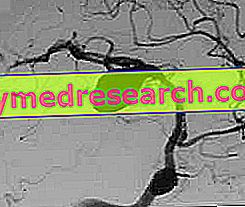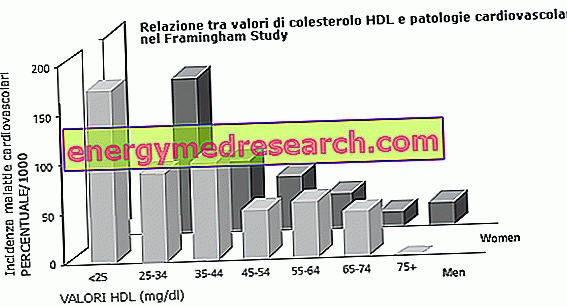What is dyskinesia?
Among the kinetic disorders, dyskinesia undoubtedly plays a cardinal role: the term refers to some involuntary movements of the musculature, which are hyperkinetic in some cases and hypokinetic in others.
In all the pathologies in which there is an involuntary and uncontrolled reduction or increase in voluntary movements or, again, in an evident muscular difficulty, one can speak correctly of dyskinesia.
The probability of onset of dyskinesia increases whenever there is damage or dysfunction of the CNS (central nervous system, which includes the spinal cord and the brain), muscles or nerves. In other words, dyskinesia represents an appreciable difficulty in controlling muscle movements.
The term dyskinesia, however, does not refer only to those disorders that fall within the neurological sphere (lack of mastery of voluntary musculature), since it is also used in internal medicine to express the difficulty of managing the movement of certain hollow organs or viscera.
Causes
It is not always simple and immediate to identify the causes attributable, considering the very wide differentiation of these kinetic disorders; however, among the most common etiopathological factors that cause dyskinesias are: traumatic events, autoimmune diseases, ischemic pathologies of cerebral circulation, CNS infections, disorders affecting peripheral nerves and degenerative genetic diseases or caused by improper use of drugs (DIMD, English acronym of Drug-Induced Movement Disorders ).
Dyskinesias and DIMD
DIMD means a heterogeneous group of movement disorders induced by pharmacological specialties: this category deserves further study, since it conceals a wide diversification of the various types of dyskinesias. DIMDs include: dystonia, akathisia and tardive dyskinesias (eg parkinsonism and stereotypies).
Dystonia represents those involuntary muscular contractions, protracted over time, characterized by repetitive and rhythmic gestures: dystonia is a dyskinesia typical of the cranio-cervical areas.
Akathisia outlines a clinical profile characterized by a sort of internal tremor: the subject suffering from akathisia tends to be restless and cannot stop or relax.

When these hyperkinetic movements lead to the interruption of drug therapy, one speaks of tardive dyskinesia due to suspension .
Antipsychotics and dyskinesias
Following the description of these DIMDs, it is natural to ask what is the mechanism of action of these pharmacological substances, in relation to the movement: why do neuroleptic-antipsychotic drugs generate these side effects?
Antipsychotic substances exert an antidopaminergic action: in other words, these drugs block the D2 receptor for dopamine, a well-known neurotransmitter synthesized by the body and implicated in brain mechanisms of movement control and mood. [taken from www.discinesia.it]. In recent years, research aimed at improving the pharmacological profile has been encouraged: in this regard, new neuroleptic drugs have been formulated, known as atypical neuroleptics, capable of exerting the same pharmacological effects as the previous ones, with the advantage of considerably reducing the effects collateral on movement (dyskinesias), at the same dosage. However, it should be pointed out that at higher doses, even the new neuroleptics can cause dyskinesias.
General classification
Kinetic alterations are not attributable solely to the administration of neuroleptic substances; depending on the location of the deficit and its characteristics, dyskinesias are cataloged in:
- Atetosis: involuntary movements are particularly slow, even if continuous. Typical dyskinesia that affects hands and feet: the affected patient tends to make twisting movements at the extremities.
- Korea: movements appear rapid, continuous and uncontrolled. They can only involve a few muscles or the whole body.
- Cramps: even cramps are among the dyskinesias. They are involuntary and painful movements, whose cause lies above all in excessive muscular effort and the loss of electrolytes.
- Dystonia: expresses an abnormal posture assumed by the body, given by the involuntary constriction of some muscle bundles.
- Hemiballism (or simply ballism): this dyskinesia is characterized by particularly violent movements of the body, which manifest a sort of involuntary "impulse".
- Myoclonus: in general, it is called nocturnal myoclonus, since they occur more often during sleep. These are short and temporary involuntary movements: in some cases they do not constitute an alarming condition, in others, they represent an alarm bell for degenerative pathologies.
- Syncinesia: complex dyskinesia, in which an involuntary movement is performed with a limb, when instead the movement is being carried out in the other limb.
- Spasms: typical dyskinesia caused by hypocalcemia and tetanus
- Tic: tics are among the stereotyped dyskinesias, whose repeated, identical and cadenced movements have a psychogenic nature.
- Tremors: some authors do not insert the tremors among the dyskinesias: the CIOMS (Council for International Organizations of Medical Sciences) excludes muscular tremors from dyskinesias, since given by " lesions of the cells of the anterior horns or of the peripheral nerve" therefore not due to extrapyramidal deficits. [Www.farmacovigilanza.org/]. However, for other authors, however, the tremors must be classified among the dyskinesias, since this is also in this case of involuntary movements of the muscles. The tremors represent rhythmic muscular oscillations not foreseen by the CNS, generated by antagonistic muscle bundles. Senile tremor, essential tremor and cerebellar tremor are distinguished.
Internal anatomical movements
As mentioned in the introduction, dyskinesias do not refer only to clonic expressions ; in internal medicine, in fact, dyskinesias are attributed to movements of internal organs or viscera. Internal dyskinesias are also classified; below are some examples:
- uterine dyskinesia: the involuntary and spastic movement of the uterine musculature could have repercussions during childbirth;
- biliary dyskinesia: the alteration of contractile movements and the speed of emptying of the bile ducts and gallbladder could generate digestive disorders;
- myocardial dyskinesia: alteration of the Chinese cardiac;
- primary ciliary dyskinesia: alteration of the ciliary function of the respiratory mucosa;
- dyskinesias of the upper esophageal sphincter (or idiopathic achalasia): the failure to incomplete release of the esophageal sphincter during swallowing generates a sensitive hypertensive status . [taken from Surgery. Vol 1-2 of R. Dionigi].
However, internal dyskinesias are rather painful and could ideally affect all organs: they are generally due to an uncoordination of the contractile function of the muscle tissue of the affected organ, independently of clearly detectable pathologies.



